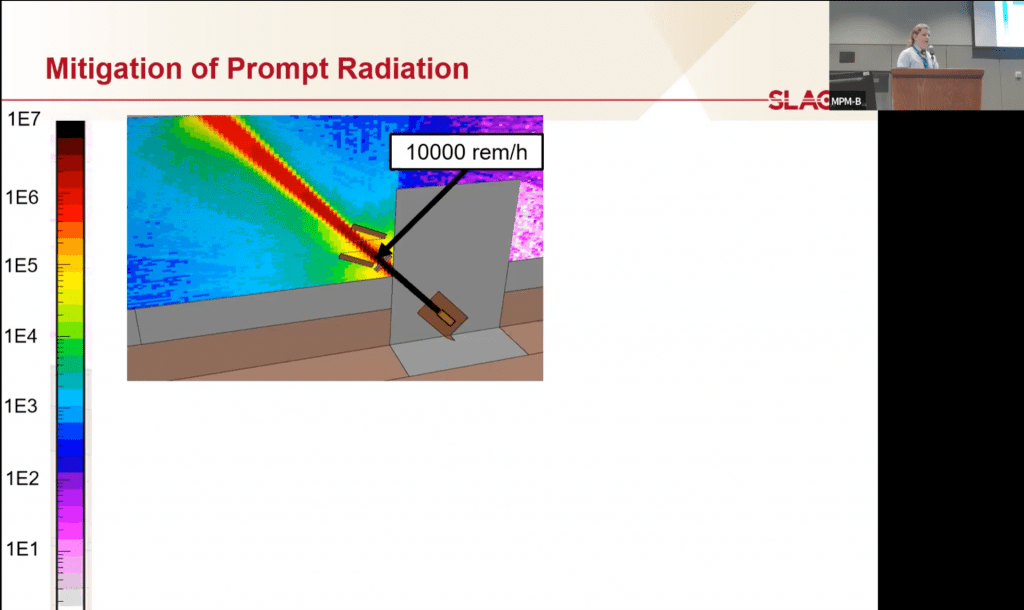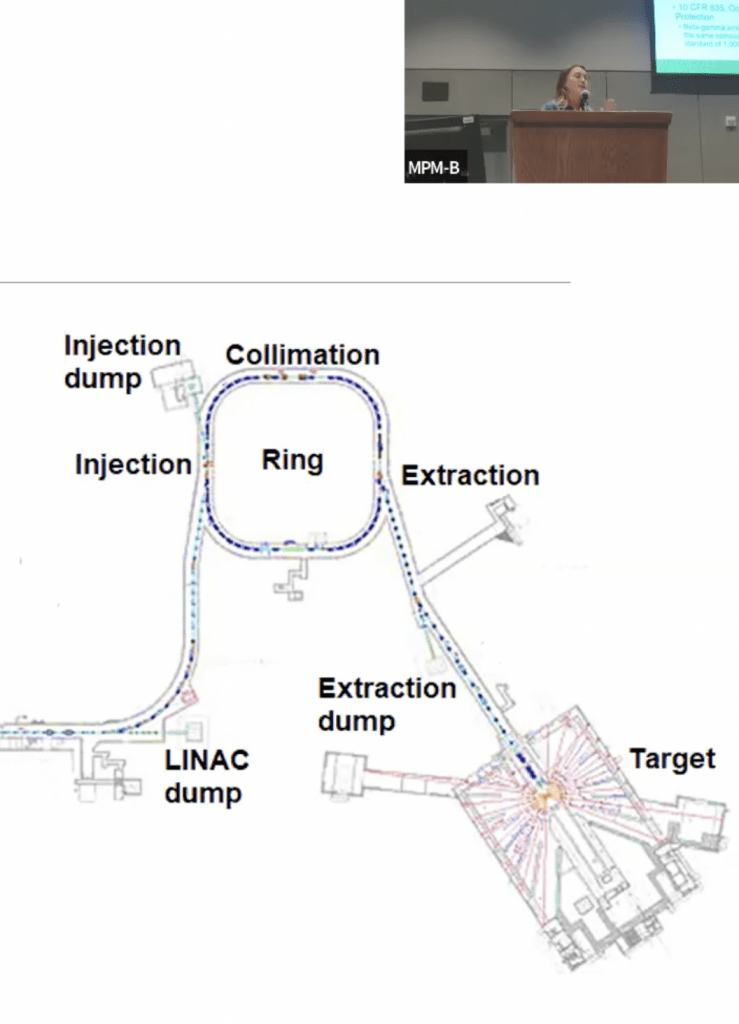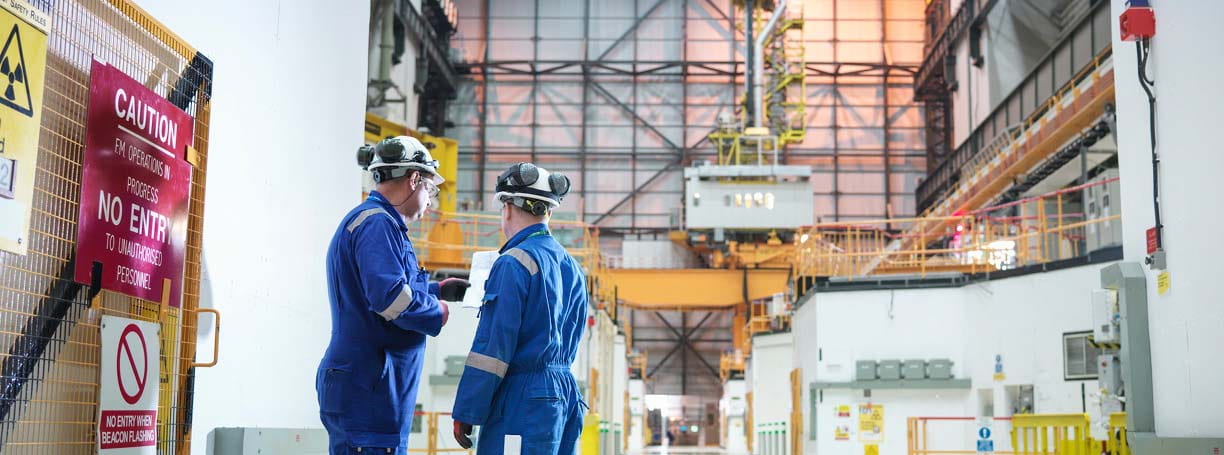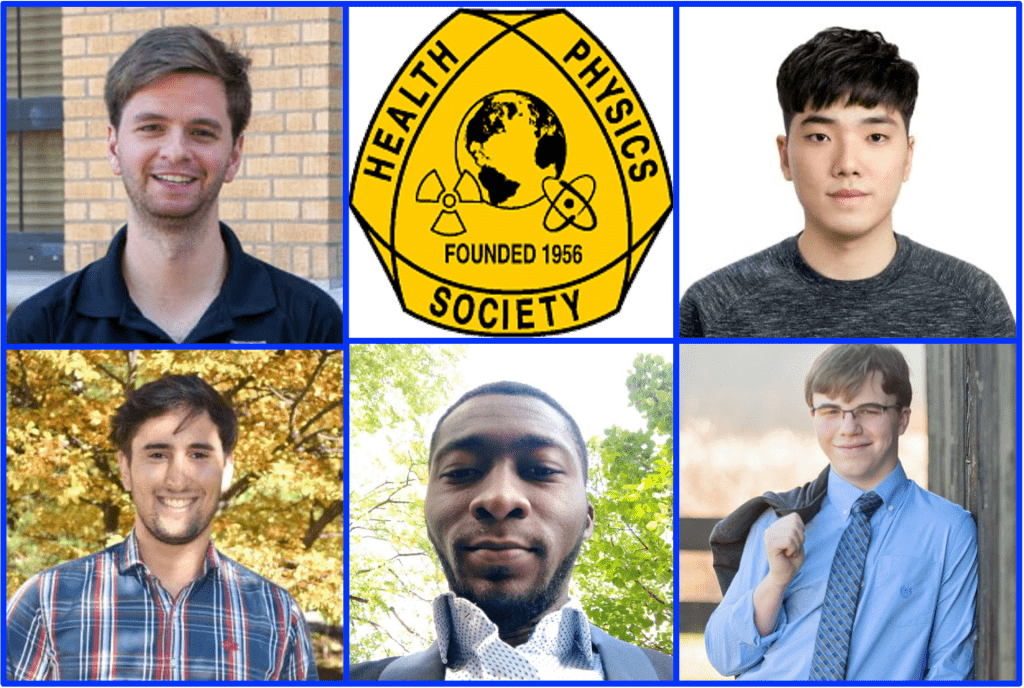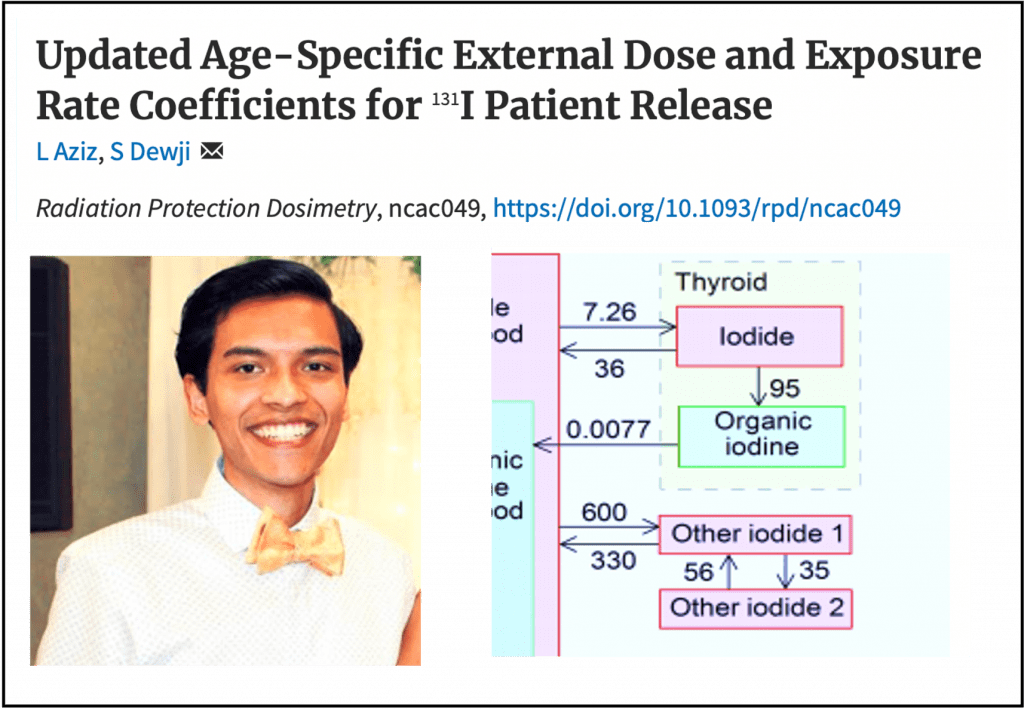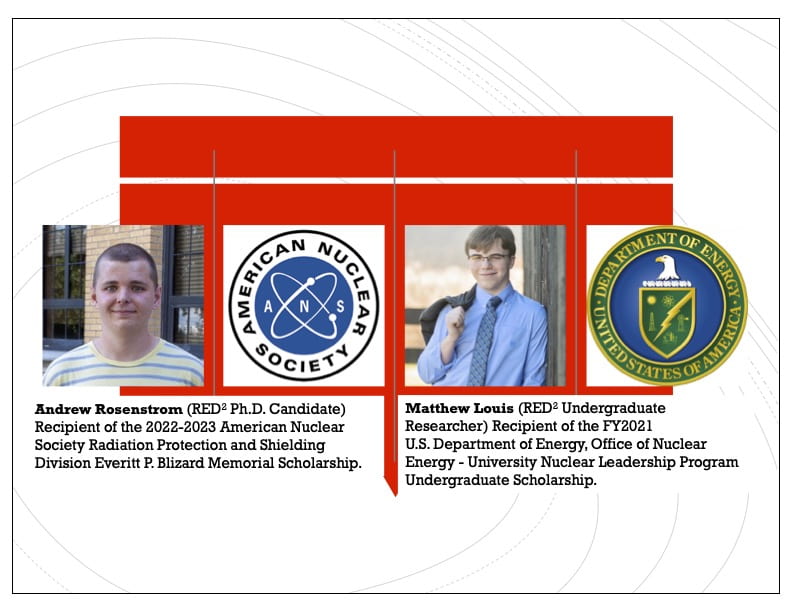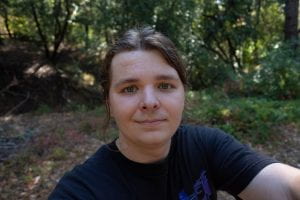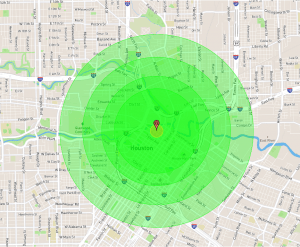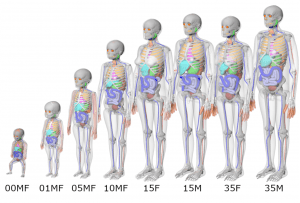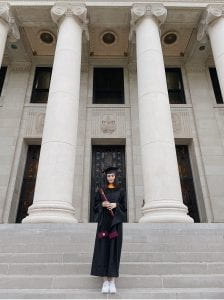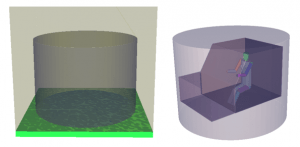As part of two key research thrusts in the RED² Laboratory – check out our latest publications in radiation shielding and in computational dosimetry!
Our first publication is led by Ph.D. candidate, Andrew Rosenstrom, in a study entitled, “Monte Carlo simulation of shielding designs for a cabinet form factor preclinical MV-energy photon FLASH radiotherapy system“, published in the journal, Medical Physics. This study investigates the use of alternating multilayered shielding compared to monolayered designs to mitigate secondary radiation for FLASH radiotherapy applications. Learn more about Andrew’s work at Stanford Linear Accelerator Laboratory and the impacts of his work in new modalities in FLASH radiotherapy.
A second publication was a study conducted by RED² Laboratory collaborators, Dr. Keith Griffin (left, recent Georgia Tech NRE/MP Ph.D. graduate and Post-Doctoral Fellow at NIH/NCI) and Mr. David Coleman (right, University of Wisconsin Medical Physics Ph.D. student and former RED² Laboratory undergraduate researcher) entitled, “Stylized versus voxel phantoms: quantification of internal organ chord length distances” in the journal, Physics in Medicine and Biology. This study is a follow-on to a prior effort investigating the organ distribution between stylized and voxel phantoms to determine the inter and intra-organ placement for future use in individualized phantom dosimetry, applications limiting the need for traditional Monte Carlo in the computation of individualized SAFs, and for future use in machine learning. Included this study is a very extensive electronic supplementary data appendix with full results to share with the research community. The paper and supporting data are available via OpenAccess.




